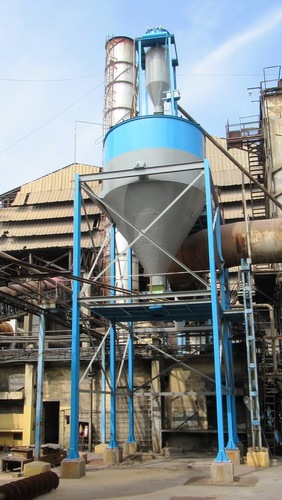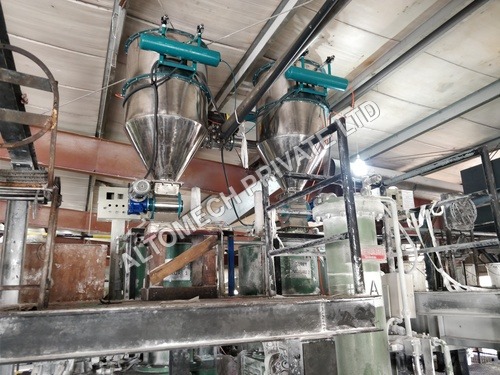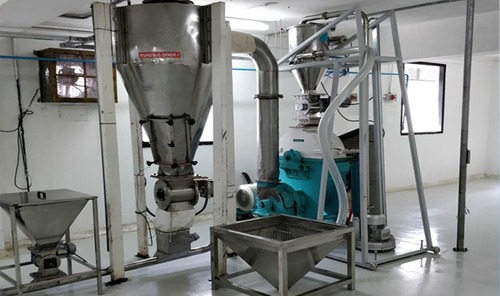- Home Page
- Company Profile
-
Our Products
- Vacuum Cleaner
- Foundry Sand Cleaning Machine
- Centralised Vacuum Cleaner
- Portable Industrial Vacuum Cleaner
- Industrial Warehouse Vacuum Cleaner
- Industrial Vacuum Cleaner -AMSC-E Series
- Bagged Vacuum Cleaner
- Industrial Vacuum Cleaner E30
- Industrial Vacuum Cleaner E50
- Industrial Wet And Dry Vacuum Cleaner
- Centralized Vacuum Cleaner
- Portable Vacuum Cleaner
- Food Grade Vacuum Cleaner
- Wet Dry Vacuum Cleaner - Amsc Models
- Three Phase Vacuum Cleaner
- Vacuum Cleaning Equipment
- Industrial Vacuum Cleaner
- Single Phase Heavy Duty Vacuum Cleaner
- Dust Collector
- Cartridge Dust Collector
- Carbon Powder Dust Collector
- Spicy Dust Collection System
- Dust Collection System
- Dust Collector Cyclones
- Down Draft Dust Collector
- Industrial Wet Dust Collector
- Industrial Dust Extraction System
- Dust Collector For Flour Mill
- Dust Collector For Woodworking
- Industrial Dust Control System
- Industrial Baghouse Dust Collector
- Cartridge Dust Collector Systems
- Industrial Dust Extraction Unit
- Industrial Sawdust Collection System
- Portable Industrial Dust Collection System
- Warehouse Dust Collector
- Pulse jet Dust Collector
- Centralised Dust Collector
- Downflow Dust Collector
- Booth Type Dust Collector
- Wood Dust Collector
- Unit Dust Collector
- Paint Booth Dust Collector
- Bag Dust Collector
- Buffing Dust Collector
- Cement Silo Dust Collector
- Reverse Pulse Dust Collector
- Dust Control Booth
- Down Flow Dust Collector
- Modular Dust Collector
- Centralized Dust Extraction System
- Dust Collection System for Spicy Industries
- Pharmaceutical Dust Collector
- Industrial Dust Collection System
- Industrial Cyclone Dust Collector
- Industrial Dust Collector
- Industrial Portable Dust Collector
- Dust Collector Machine
- Vacuum Conveyor
- Pneumatic Vacuum Conveyor
- Vacuum Conveyor Systems
- Pharmaceutical Vacuum Transfer System
- Vacuum Pneumatic Conveying System
- Material Vacuum Transfer System
- Pharmaceutical Vacuum Conveyor
- Vacuum Conveyor for Cement Industries
- Powder Conveying Equipment
- Vacuum Conveyor for Powder
- Vacuum Conveying System For Grain Unloading
- Portable Vacuum Conveyor
- Vacuum Conveyor
- Lean Phase Vacuum Conveying System
- Carbon Powder Conveying System
- Pneumatic Shell Sand Conveyor
- Vacuum Conveyor for Food Industries
- Vacuum Conveyor for Chemical Industries
- Vacuum Conveyor for Plastic Industries
- Vacuum Conveyor for Metal Chip Industries
- Vacuum Conveying System
- Vacuum Powder Conveying System
- Vacuum Conveying System For Powder
- Food Grade Conveyor
- Sand Conveying System
- Chemical Vacuum Conveyor
- Spillage Conveying System
- Pneumatic Batch Conveying System
- Sugar Vacuum Conveyors
- Hopper Loader Vacuum Conveyor System
- Tea Powder Conveying System
- Vacuum Conveyor System
- Vacuum Loader
- Plastic Granular Conveyor System
- Wood Chip Vacuum Conveyor
- Vacuum Conveyor For Sugar Powder
- Vacuum Conveyor for Industrial Application
- Pneumatic Conveyor
- Stainless Steel Pneumatic Conveyor
- Material Pneumatic Transfer System
- Pneumatic Conveying System
- Pneumatic Conveying System For Food Industries
- Pneumatic Conveying Unit
- Pneumatic Conveyor For Industrial Application
- lean Phase Pneumatic Conveying
- Pneumatic Transfer System For Powder
- Pneumatic Powder Transfer System
- Food Grade Pneumatic Conveyor
- Pneumatic Powder Conveying System
- Pneumatic Conveying System for Powder
- Pneumatic Grain Conveyor
- Pneumatic Transfer System for Pellets
- Pharmaceutical Pneumatic Transfer System
- Pneumatic Conveyor for Food Industries
- Pneumatic Conveyor for Pharmaceutical Industries
- Pneumatic Conveyor For Powder
- Bulk Material Conveying System
- Lime Stone Powder Conveyor
- Grain Conveying System
- Cement Conveying System
- Ash Conveying System
- Pneumatic Vacuum Conveying System
- Pneumatic Conveyor for Plastic Industries
- Pneumatic Conveyor for Cement Industries
- Pneumatic Conveyor for Metal Chip Industries
- Pneumatic Conveyor for Chemical Industries
- Pneumatic Conveyor For Cattle Feed
- Negative Pressure Pneumatic Conveying System
- Powder Transfer System
- Jumbo Bag Loading and Unloading System
- Industrial Blowers
- Bag Dump Station With Dust Collector
- Jumbo Bag Filling System
- Vacuum Cleaner
- More Info
- Branches

Pneumatic Conveying System
Product Details:
- Product Type Pneumatic Conveying System
- Usage Pneumatic Conveying System
- Material MS AND SS
- Type Pneumatic Conveyor
- Structure Other
- Belt Conveyor Other
- Roller Conveyor Other
- Click to view more
X
Pneumatic Conveying System Price And Quantity
- INR/Unit
- 1 Unit
Pneumatic Conveying System Product Specifications
- Other
- Other
- 1 YR
- Other
- Other
- MS AND SS
- Pneumatic Conveyor
- 440 Volt (v)
- Pneumatic Conveying System
- Other
- Other
- 1 Tonne
- Pneumatic Conveying System
Pneumatic Conveying System Trade Information
- Coimbatore
- 15 Unit Per Year
- 30 Days
- Contact us for information regarding our sample policy
- WOODEN
- All India
- AVAILABLE
Product Description
A pneumatic conveying system is a method used to transport bulk materials, such as powders or granules, from one place to another using a gas (usually air) as the conveying medium. This system is widely employed in various industries, including food processing, pharmaceuticals, chemicals, plastics, and mining, among others.
# Key components of a typical pneumatic conveying system include:
1. Material Source: The bulk material that needs to be transported is usually stored in a hopper or silo.
2. Conveying Pipeline: This is a closed system of pipes or tubes through which the material is transported. The pipeline is designed to maintain the necessary airflow and pressure to convey the material efficiently.
3. Air Mover (Compressor or Blower): A device that generates the air flow necessary for conveying the material. It provides the pressure and velocity required to move the material through the pipeline.
4. Conveying Material Injection Point: This is where the material is introduced into the conveying air stream. It can be done through various mechanisms, such as rotary valves, venturi injectors, or screw feeders.
5. Separation/Filtering Device: To separate the material from the conveying air at the destination, preventing the material from entering the discharge point. This is often accomplished using filters or cyclones.
6. Receiver or Destination: The point where the material is collected or delivered. This could be a storage silo, a processing unit, or any other destination.
# Pneumatic conveying systems can be classified into two main types:
1. Dilute Phase Conveying: In this type, the material is transported in suspension within the air stream. The concentration of material in the pipeline is relatively low. Dilute phase conveying is suitable for free-flowing materials.
2. Dense Phase Conveying: Here, the material is conveyed in a more concentrated form, and the velocity of the air is typically lower. Dense phase conveying is often used for cohesive or abrasive materials.
# Applications of Pneumatic Conveying System
Pneumatic conveying systems find application in various industries due to their ability to efficiently transport bulk materials in a controlled manner. Some common applications include:
1. Food Processing Industry:
a. Flour and Sugar Handling: Pneumatic conveying is often used to transport flour, sugar, and other powdered ingredients in food processing plants.
b. Coffee Bean Handling: Coffee beans can be transported from roasters to packaging units using pneumatic conveying systems.
c. Dairy Industry: Powdered milk, infant formula, and other dairy products can be conveyed using pneumatic systems.
2. Pharmaceutical Industry:
a. Drug Manufacturing: Pneumatic systems are used for conveying pharmaceutical powders and granules between various stages of drug manufacturing.
b. Tablet Press Feeding: The transport of powders to tablet press machines for pharmaceutical tablet production.
3. Chemical Industry:
a. Plastic Pellets Handling: Pneumatic conveyors are used to transport plastic pellets in the plastic manufacturing process.
b. Chemical Powder Conveyance: Various chemicals in powder or granular form can be efficiently transported using pneumatic systems.
4. Mineral Processing and Mining:
a. Coal and Ore Transport: Pneumatic conveying is employed for the transport of coal, ores, and other minerals in mining operations.
b. Cement Conveyance: Powdered cement can be conveyed from silos to production units or storage areas.
5. Agricultural Industry:
a. Grain Handling: Pneumatic systems are used to move grains such as wheat, corn, and rice from storage silos to processing units or distribution points.
b. Animal Feed Conveyance: Transporting powdered or granular animal feed ingredients in feed mills.
6. Wood Processing:
a. Sawdust and Wood Chips Transport: Pneumatic conveying is used in woodworking facilities to transport sawdust, wood chips, and other wood processing by-products.
7. Waste Treatment and Recycling:
a. Material Recycling: Pneumatic systems can be used to transport recycled materials like plastic, paper, and metal in recycling facilities.
8. Paper and Pulp Industry:
a. Wood Pulp Conveyance: Pneumatic systems are utilized for transporting wood pulp and other materials in paper and pulp manufacturing.
9. Power Plants:
a. Fly Ash Handling: Pneumatic conveying systems are commonly used for transporting fly ash generated in power plants.
10. Textile Industry:
a. Fiber Conveyance: Pneumatic systems are employed to transport textile fibers in the production of textiles.
# Frequently Asked Questions (FAQ):
Q. What is pneumatic conveying?
Answer: Pneumatic conveying is a method of transporting bulk materials using a gas (usually air) as the conveying medium. It is commonly used in industries to move powders, granules, and other dry bulk materials from one location to another.
Q. What types of materials can be conveyed pneumatically?
Answer: Pneumatic conveying systems are suitable for a wide range of materials, including powders, granules, grains, plastic pellets, chemicals, minerals, and more. The material's characteristics, such as particle size, shape, and flowability, influence the system design.
Q. What are the main components of a pneumatic conveying system?
Answer: The main components include a material source (hopper or silo), conveying pipeline, air mover (compressor or blower), conveying material injection point, separation/filtering device, and a receiver or destination where the material is collected.
Q. What are the different types of pneumatic conveying systems?
Answer: There are two main types: dilute phase conveying, where the material is transported in suspension within the air stream, and dense phase conveying, where the material is conveyed in a more concentrated form with lower air velocity.
Q. What are the advantages of pneumatic conveying systems?
Answer: Advantages include flexibility in routing, reduced risk of contamination, the ability to transport materials over long distances, and the suitability for various industries and materials.
Q. In which industries are pneumatic conveying systems commonly used?
Answer: Pneumatic conveying systems are used in industries such as food processing, pharmaceuticals, chemicals, plastics, mining, agriculture, power plants, and more.
Q. How is material introduced into the pneumatic conveying system?
Answer: Material is typically introduced through mechanisms such as rotary valves, venturi injectors, screw feeders, or other feeding devices at the conveying material injection point.
Q. What considerations are important in designing a pneumatic conveying system?
Answer: Considerations include the characteristics of the bulk material (particle size, density, etc.), conveying distance, required capacity, pressure drop, and the need for special features like material separation or filtration.
Q. Is pneumatic conveying suitable for abrasive materials?
Answer: Yes, pneumatic conveying can be adapted for abrasive materials, but system components may need to be designed with wear-resistant materials to withstand the abrasion.
Q. What maintenance is required for pneumatic conveying systems?
Answer: Regular maintenance includes checking for leaks, inspecting system components for wear, and cleaning filters or other separation devices. It's important to follow the manufacturer's guidelines for maintenance.
Q. Can pneumatic conveying systems handle materials with varying particle sizes?
Answer: Yes, pneumatic conveying systems can be designed to handle materials with varying particle sizes, but the system must be appropriately configured to accommodate the range of particle sizes.
Enter Buying Requirement Details
Other Products in 'Pneumatic Conveyor' category
 |
ALTOMECH PRIVATE LTD.
All Rights Reserved.(Terms of Use) Developed and Managed by Infocom Network Private Limited. |

 English
English Spanish
Spanish French
French German
German Italian
Italian Chinese (Simplified)
Chinese (Simplified) Japanese
Japanese Korean
Korean Arabic
Arabic Portuguese
Portuguese


